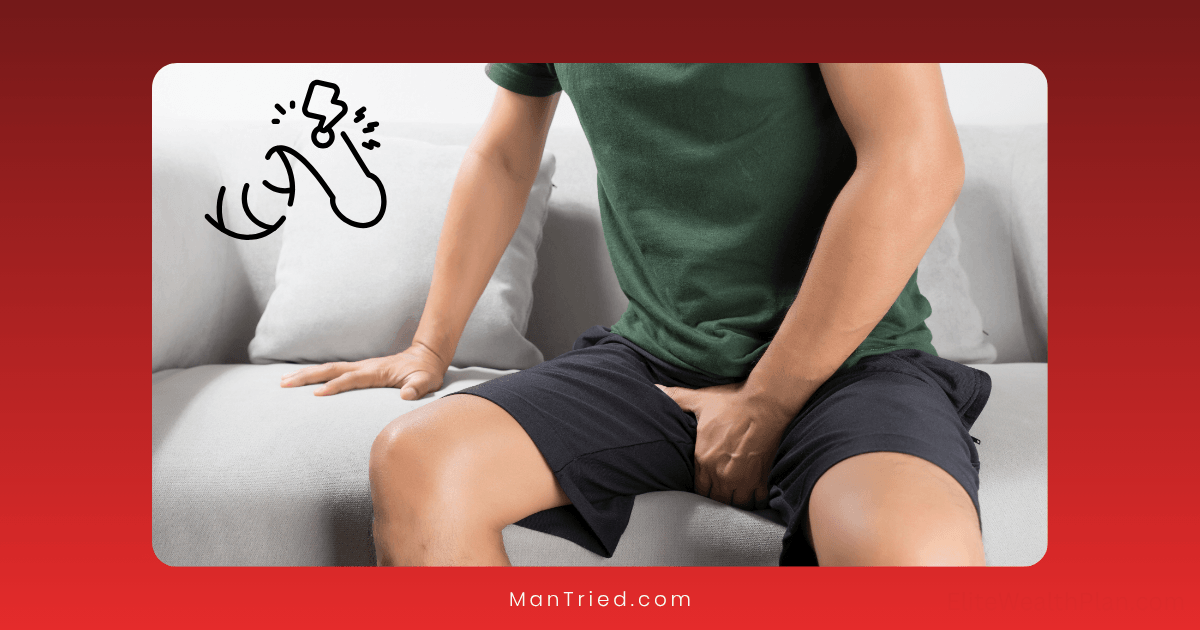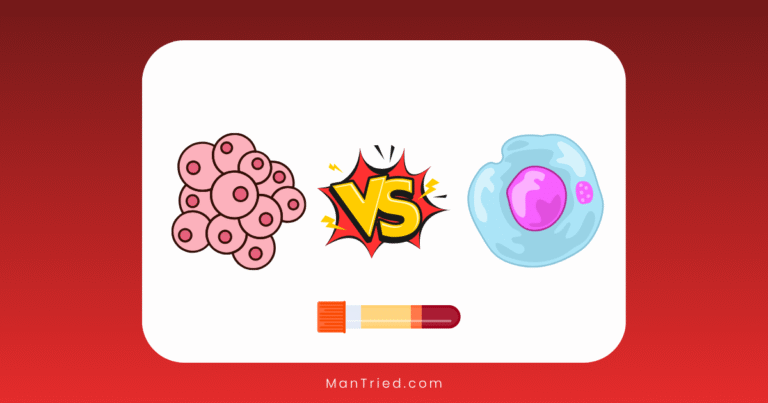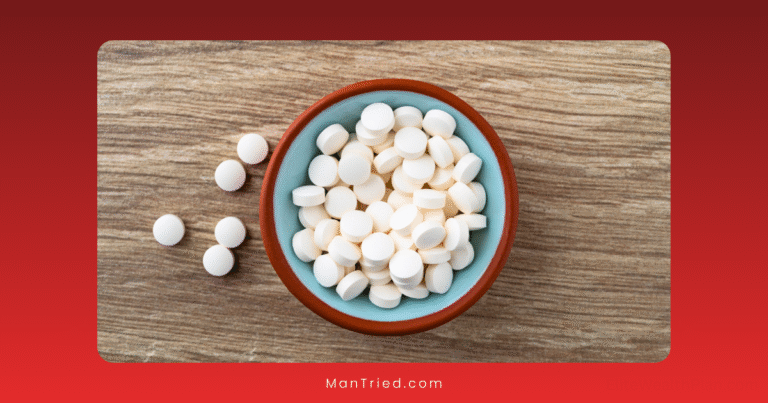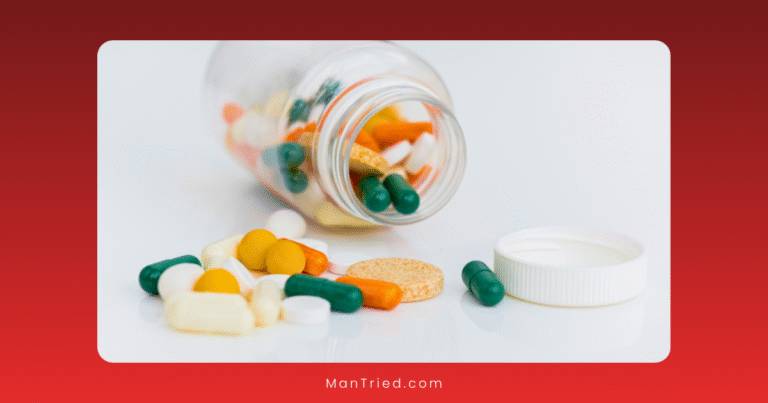Pain Management Strategies for Penile Injections

For men using intracavernosal injections to treat erectile dysfunction (ED), the concern about pain can be a significant barrier to starting or continuing this highly effective therapy. While studies show that injection therapy has success rates of 70-90% even in cases resistant to oral medications, approximately 30% of users report experiencing some discomfort during or after the procedure.
The good news? With proper technique and targeted pain management strategies, most men can minimize or even eliminate injection-related discomfort. This comprehensive guide explores evidence-based approaches to make penile injections more comfortable and less intimidating.
Understanding Pain Associated with Penile Injections
Before addressing solutions, it’s important to understand the various types of discomfort that can occur with injection therapy:
Types of Injection-Related Pain
- Needle Insertion Pain: The initial sharp sensation when the needle penetrates the skin and underlying tissue.
- Medication Burning: A burning or stinging sensation that occurs during or immediately after medication delivery, often related to the medication’s pH or specific ingredients.
- Post-Injection Aching: A dull, throbbing discomfort that develops after injection and may persist for minutes to hours.
- Psychological Distress: Anxiety and tension that can amplify physical sensations and create a feedback loop of increased pain perception.
Dr. James Wilson, urologist at Boston Medical Center, explains: “Understanding which type of discomfort a patient is experiencing is crucial for developing targeted pain management strategies. Different approaches work for different types of pain.”
Who Experiences Pain?
Research published in the Journal of Sexual Medicine indicates that pain sensitivity with penile injections varies significantly between individuals:
- Approximately 30% of users report mild to moderate pain
- 5-10% report pain significant enough to consider discontinuing therapy
- Pain typically decreases with repeated use as technique improves and anxiety diminishes
- Certain medication formulations are associated with higher rates of discomfort
According to a 2025 patient survey by the Sexual Medicine Society of North America, first-time users report the highest pain scores, with a median pain rating of 4.2/10, decreasing to 2.1/10 after five or more injections.
Prevention: Techniques to Minimize Pain Before It Occurs
Optimizing Injection Technique
The single most important factor in reducing injection pain is proper technique:
1. Needle Selection
- Gauge: Use the smallest gauge needle that can effectively deliver the medication (typically 29-31 gauge)
- Length: Select the appropriate needle length for your anatomy (typically 1/2 inch or 8mm)
- Quality: Use high-quality, sharp needles and never reuse needles
Dr. Sarah Johnson, sexual medicine specialist at Mayo Clinic, advises: “A fresh, sharp needle of appropriate size makes a tremendous difference in comfort. Even one reuse can significantly dull the needle and increase discomfort.”
2. Injection Site Selection
- Location: The 10 o’clock or 2 o’clock position on the shaft provides access to the corpus cavernosum while avoiding major nerves and blood vessels
- Rotation: Alternate sides with each injection to prevent tissue damage
- Avoid Problem Areas: Stay away from visible veins, scar tissue, and any areas that have previously caused pain
3. Proper Injection Angle and Depth
- Angle: Insert the needle perpendicular (90 degrees) to the shaft
- Depth: Ensure complete penetration of the needle (except for very long needles)
- Steadiness: A quick, confident insertion typically causes less discomfort than a hesitant approach
4. Injection Speed
- Medication Delivery: Inject medication slowly over 5-10 seconds
- Needle Removal: Remove the needle smoothly in one motion
Medication Considerations
1. Formulation Selection
Different ED injection formulations have different pain profiles:
- Alprostadil (Caverject, Edex): Often associated with more burning sensation
- Bimix (papaverine and phentolamine): Generally less painful than alprostadil alone
- Trimix (papaverine, phentolamine, and alprostadil): Often well-tolerated when properly compounded
- Quadmix: Some formulations include additional components specifically to reduce discomfort
Dr. Michael Chen of University Urology Associates notes: “For pain-sensitive patients, we often start with Bimix and only transition to Trimix if necessary for efficacy. The absence of alprostadil in Bimix significantly reduces burning sensations for many men.”
2. Compounding Quality
The quality of medication compounding can significantly impact comfort:
- pH Adjustment: Properly buffered solutions cause less burning
- Preservative-Free: Minimizing unnecessary additives can reduce irritation
- Freshness: Using recently compounded medication within its optimal use period
According to research from Olympia Pharmacy, specialized compounding techniques that optimize pH and minimize preservatives can reduce pain reports by up to 40%.
Active Pain Management Strategies
Before Injection
1. Topical Anesthetics
- EMLA Cream (lidocaine/prilocaine): Apply to the intended injection site 20-30 minutes before injection
- Lidocaine Gel/Cream (4-5%): Apply 15-20 minutes before injection
- Refrigerant Sprays: Quick-acting numbing sprays can be applied immediately before injection
A study published in International Journal of Impotence Research found that pre-application of EMLA cream reduced pain scores by an average of 65% compared to no anesthetic.
2. Temperature Modification
- Ice Pack: Apply briefly (30-60 seconds) to numb the area before injection
- Warm Medication: Allow refrigerated medication to reach room temperature before injection
3. Psychological Preparation
- Relaxation Techniques: Deep breathing exercises before injection
- Distraction Methods: Listening to music or engaging in conversation
- Visualization: Imagining successful, pain-free injections
During Injection
1. Physical Techniques
- Stretching the Skin: Gently stretching the skin at the injection site can reduce nerve stimulation
- Vibration: Some men benefit from applying a small vibrating device near (not at) the injection site, which can interfere with pain signal transmission
- Pressure: Applying pressure near the injection site can reduce sensation
2. Distraction Methods
- Controlled Breathing: Slow, deep breaths during injection
- Focus Shifting: Concentrating on a specific object or sound
- Mental Counting: Counting backward from 100 by 7s or another challenging mental task
After Injection
1. Immediate Interventions
- Gentle Pressure: Apply firm but gentle pressure to the injection site for 2-3 minutes
- Cold Compress: Brief application can reduce inflammation and discomfort
- Gentle Massage: After applying pressure, gentle massage around (not on) the injection site can reduce aching
2. Pharmacological Approaches
- Acetaminophen: Can help with mild post-injection discomfort
- NSAIDs (ibuprofen, naproxen): May help reduce inflammation and pain
- Topical Analgesics: Menthol-based creams can provide temporary relief for persistent aching
Note: Always consult with your healthcare provider before taking any medication to ensure it doesn’t interact with your ED treatment or other conditions.
Specialized Solutions for Persistent Pain
For men who continue to experience significant discomfort despite basic interventions, several advanced approaches may help:
1. Medication Reformulation
Working with your healthcare provider and a specialized compounding pharmacy to adjust your medication:
- Custom Buffering: Adjusting the pH of the solution
- Concentration Modification: Changing the concentration while maintaining efficacy
- Alternative Formulations: Switching from Trimix to Bimix or exploring newer combinations
2. Vibration Devices
Specialized medical vibration devices designed specifically for injection pain management:
- Buzzy Device: A small vibrating device with ice pack that can be applied near the injection site
- Vibrating Injection Assistants: Devices that combine needle guidance with vibration therapy
A 2025 study in Sexual Medicine Reviews found that vibration-assisted injections reduced pain scores by 47% compared to standard technique.
3. Prescription Topical Anesthetics
For extremely pain-sensitive individuals, stronger prescription options may be appropriate:
- Compounded Numbing Creams: Custom formulations with higher anesthetic concentrations
- Tetracaine Preparations: Sometimes more effective than lidocaine for certain individuals
- Multi-Agent Formulations: Combinations of different anesthetics for enhanced effect
4. Psychological Approaches
For men whose pain is amplified by anxiety or past negative experiences:
- Cognitive Behavioral Therapy: Specific techniques to address needle anxiety
- Clinical Hypnosis: Can significantly reduce pain perception in some individuals
- Guided Meditation Apps: Specialized programs for medical procedure anxiety
Experiences and Patient Tips
Many men who successfully use injection therapy have developed personal strategies that make the process more comfortable:
Robert M., 58, who has used Trimix for three years, shares: “I found that warming the medication to room temperature, using a vibrating massager on my thigh during injection, and taking three deep breaths right before inserting the needle reduced my discomfort dramatically.”
James T., 67, offers: “What worked for me was applying an ice cube for 30 seconds before injection and using the smallest possible needle. I barely feel it now, and the results are absolutely worth the minor discomfort.”
Michael D., 52, suggests: “Having my partner help with the injection not only reduced my anxiety but also improved the technique. Two sets of steady hands are better than one, especially when you’re just starting out.”
When to Seek Medical Attention
While some discomfort with injections can be normal, certain symptoms warrant immediate medical attention:
- Severe or increasing pain that doesn’t resolve within 30 minutes
- Significant bruising or swelling
- Signs of infection: Redness, warmth, discharge
- Development of nodules or hard areas
- Persistent pain between injections
- Priapism: Erection lasting longer than 4 hours (a medical emergency)
Dr. Lisa Martinez, urologist at Cleveland Clinic, emphasizes: “Pain that is severe, persistent, or changing in character should never be ignored. It could indicate improper technique, infection, or tissue damage that requires medical intervention.”
The Psychological Component: Overcoming Injection Anxiety
For many men, the psychological barrier to self-injection can be more challenging than the physical discomfort. Strategies to address this aspect include:
Gradual Exposure
- Observation: Watching the procedure being performed by a healthcare provider
- Guided Practice: Performing the injection under supervision multiple times
- Simulation: Practicing with saline or on injection models before using actual medication
Partner Involvement
- Shared Responsibility: Having a partner learn the technique
- Supportive Presence: Even if not administering the injection, having a supportive partner present can reduce anxiety
- Positive Reinforcement: Celebrating successful injections to build confidence
Professional Support
- Injection Training: Multiple sessions with a healthcare provider until completely comfortable
- Nurse Educators: Specialized nurses who can provide detailed training and support
- Support Groups: Connecting with other men using injection therapy
According to Dr. James Wilson, “The psychological component of injection therapy is often underestimated. We find that adequate training, addressing anxiety directly, and sometimes involving partners in the process significantly improves adherence and satisfaction.”
Conclusion: Making Injection Therapy Sustainable
Penile injection therapy remains one of the most effective treatments for erectile dysfunction, particularly for men who don’t respond to oral medications. While the prospect of self-injection may initially seem daunting, the combination of proper technique, appropriate pain management strategies, and psychological support makes this therapy not only tolerable but sustainable for the vast majority of men.
With success rates of 70-90% even in difficult-to-treat cases, the benefits of injection therapy often far outweigh the temporary discomfort that can be effectively managed using the strategies outlined in this guide.
Remember that most men report decreasing pain with continued use as technique improves and anxiety diminishes. By working closely with your healthcare provider to address any discomfort, you can maximize the benefits of this highly effective treatment while minimizing any associated pain.






